Best Coaxial Cables 2025: RG & LMR Selection Guide
Aug 17,2025
Introduction
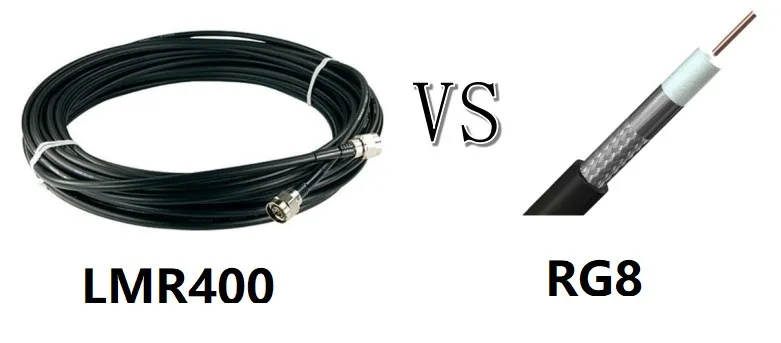
This illustration summarizes the framework for selecting coaxial cables, comparing RG and LMR families for different environments and applications.
Choosing the right coaxial cable isn’t about memorizing every spec—it’s about matching your system to the right RG or LMR family with minimal friction. This guide gives you fast, practical answers: quick picks by scenario, skim-friendly tables (loss, size, bend radius), and clear head-to-head comparisons like RG8X vs RG58, RG6 vs RG11, and LMR-400 vs RG8/RG213.
We follow a simple framework—impedance, loss vs. length, and flexibility/environment—so you can decide in minutes, not hours. You’ll also find focused sections on micro-coax (RG316/RG174/RG178) and semi-rigid lines (RG402/RG405) for device internals and precision fixtures.
When you’re ready to build, TEJTE supports made-to-order assemblies and adapter pigtails (SMA, N, BNC, TNC, F) to your exact length, orientation, and sealing needs, so installs are clean and repeatable. Keep reading, pick the cable that fits your band and run, and convert those specs into a build that works the first time.
Coaxial Cable Quick Picks
- Indoor device jumpers at 2.4/5.8 GHz, ≤10 ft: RG58 for maximum flexibility, or rg8x coaxial cable if you want meaningfully lower loss without jumping to a large diameter.
- Outdoor Wi-Fi/LTE/5G runs, 50–150 ft: cable coaxial lmr 400 is the default low-loss choice most installers reach for.
- Very long outdoor spans, 150–300 ft: lmr 600 trims additional dB where link budget is tight; accept the larger bend radius.
- 75 Ω TV/SAT/CATV: cable coaxial rg6 for typical drops; rg11 coaxial cable for long backbones and multi-split distribution.
- Tight, in-device harnesses: rg316 when you need PTFE, heat tolerance, and tidy pigtails. For ultra-compact routing, rg 174 coaxial cable or rg178; for rugged, high-temp internal jumpers, rg142.
- Precision/microwave fixtures: rg402/rg405 semi-rigid for repeatable geometry and stable impedance in jigs and instruments.
- Legacy HF/VHF/UHF bases: rg8 coaxial cable / RG213 families work; upgrade to LMR-400 for lower loss at modern bands.
Need these with the right ends, boots, and labels? TEJTE builds custom
RG Cable: 3-Step Choice
- Match system impedance. Most radios and test chains are 50 Ω; CATV/SAT/video paths are 75 Ω. Keep impedance consistent end-to-end to avoid mismatch loss and elevated VSWR.
- Balance loss vs length. As frequency and distance climb, attenuation compounds. Step up families accordingly: rg58 → rg8x → LMR-400 → lmr 600 (50 Ω) and RG6 → RG11 (75 Ω).
- Respect handling and environment. Consider minimum bend radius, jacket rating (UV/temperature), pull strength, and connector ecosystem. A cable you can’t route or weatherproof is the wrong cable—no matter how good the datasheet looks.
Coax Comparison Table
Attenuation varies by brand, dielectric, and exact frequency. Use this for selection, then confirm numeric values from the final datasheet or ask TEJTE to validate your frequency and run length.
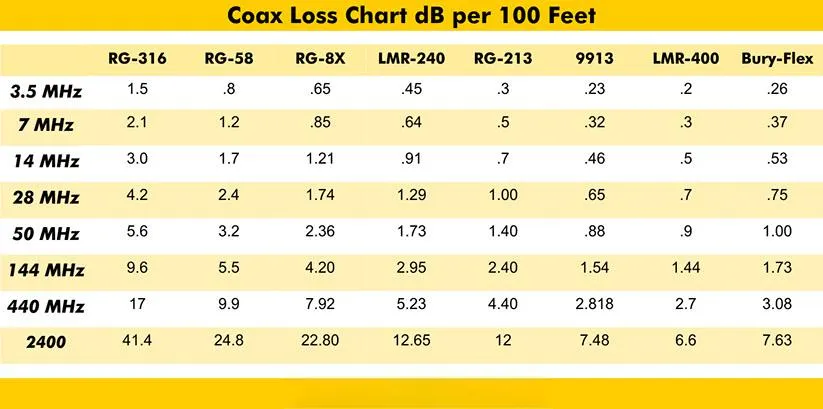
This chart compares RG and LMR coaxial cables, helping users quickly evaluate performance, handling, and connector options for different use cases.
| Cable (Ω) | Typical Use | Relative Loss | Flexibility | Relative Bend Radius | Relative OD | Common Connectors / Notes |
|---|---|---|---|---|---|---|
| RG58 (50) | Short indoor jumpers | High | High | Tight | Small | Ubiquitous RG-58; SMA/BNC/N/TNC everywhere |
| RG8X (50) | Short-mid runs | Med-High | Med-High | Tight-Med | Small-Med | Lower loss than RG-58, still easy to route |
| RG8 / RG213 (50) | Base feedlines | Medium | Medium | Medium | Large | Rugged legacy workhorse; good outdoors |
| LMR-400 (50) | Low-loss general outdoor | Low | Medium | Medium | Large | Installer favorite for Wi-Fi/LTE/5G |
| LMR-600 (50) | Very low-loss long runs | Very Low | Lower | Wider | Larger | Excellent 150–300 ft spans |
| RG-6 (75) | TV/SAT/CATV drops | Medium (75 Ω context) | Medium | Medium | Medium | F-type compression; BNC-75 in pro video |
| RG-11 (75) | Long 75 Ω backbones | Low (75 Ω) | Lower | Wider | Larger | For longer trunks / multi-split paths |
| RG-316 (50) | In-device pigtails | High (short OK) | Medium | Tight | Small | PTFE; heat-tolerant; SMA/MCX/MMCX |
| RG-174 (50) | Ultra-compact internal | High | High | Tight | Very Small | For tight spaces; keep lengths short |
| RG-178 (50) | Ultra-thin variant | High | High | Tight | Very Small | Thinner than RG-174; higher loss |
| RG-142 (50) | Rugged / high-temp internal | Med-High | Lower | Wider | Medium | Double-shielded PTFE; robust |
| RG-402 / RG-405 (50) | Semi-rigid precision microwave | Low-Med | Low | Tool-set | Small | Stable shape; microwave/mmWave fixtures |
Best Coaxial Cable Picks
Best Overall for Outdoor 50 Ω Runs: cable coaxial lmr 400
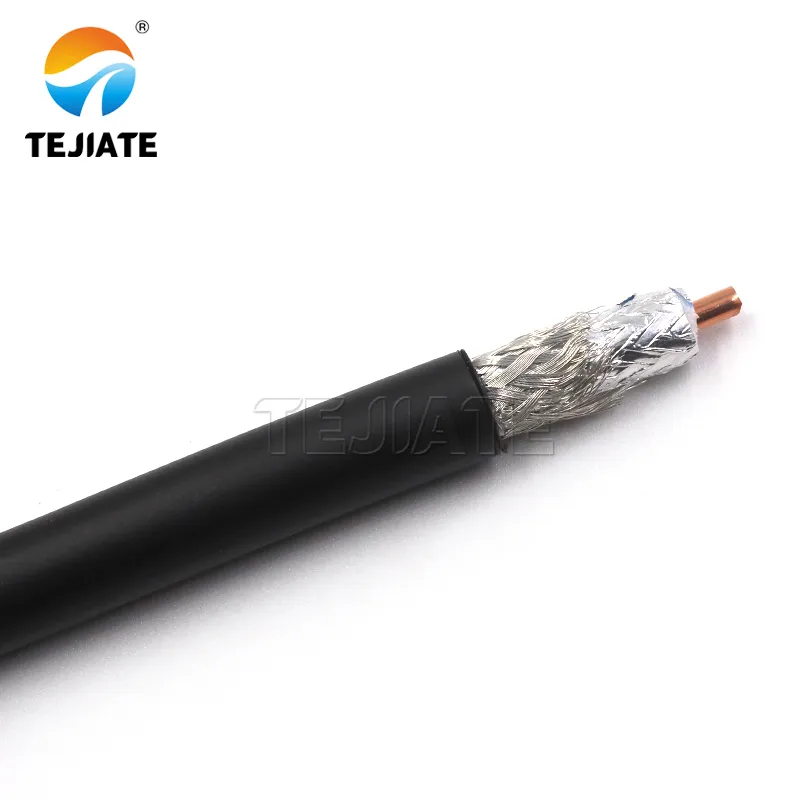
The image emphasizes LMR400’s balance of low attenuation, durability, and strong connector ecosystem, making it the go-to cable for 50–150 ft outdoor runs.
If you want one answer for most rooftop APs, small cells, or base station feedlines, LMR-400 is the “just works” solution. It delivers low loss without going unwieldy on diameter, has a mature connector ecosystem, and holds up in weather when properly booted and sealed. It’s the cable other options are compared to.
Use it when: UHF/SHF and 50–150 ft runs are common; you want a proven balance of attenuation, handling, and cost.
Lowest Loss for Long 50 Ω Runs: lmr 600
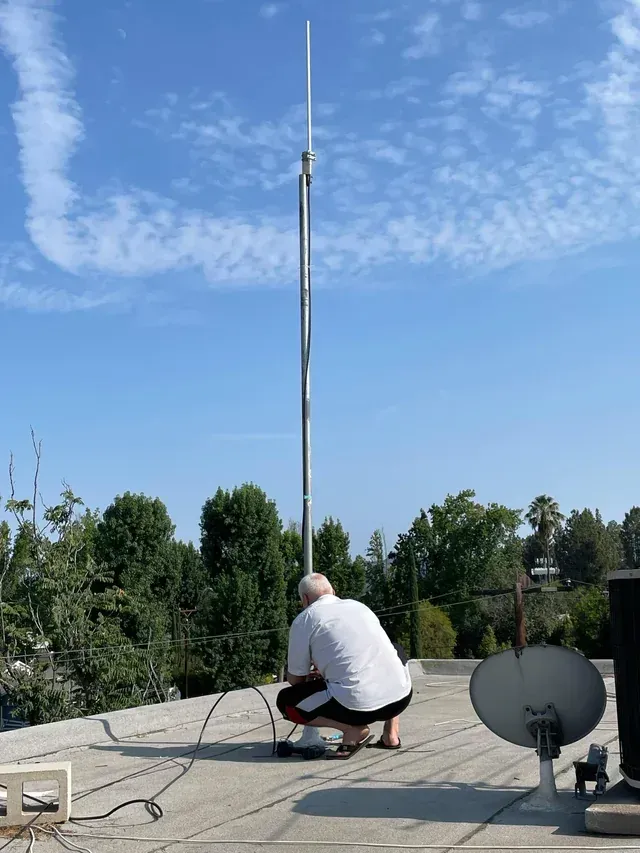
The photo highlights LMR-600’s role in professional telecom infrastructure, where its larger diameter and rugged build ensure minimal signal loss and reliable performance over extended tower installations.
LMR-600 shaves meaningful dB over long spans, especially above 1 GHz. You’ll trade bend radius and routing ease, but if your link budget is tight or tower runs are long, the upgrade is worth it.
Use it when: 150–300 ft at UHF/SHF, or you’re consolidating splitters/filters and need headroom.
Best 75 Ω Everyday Cable: cable coaxial rg6
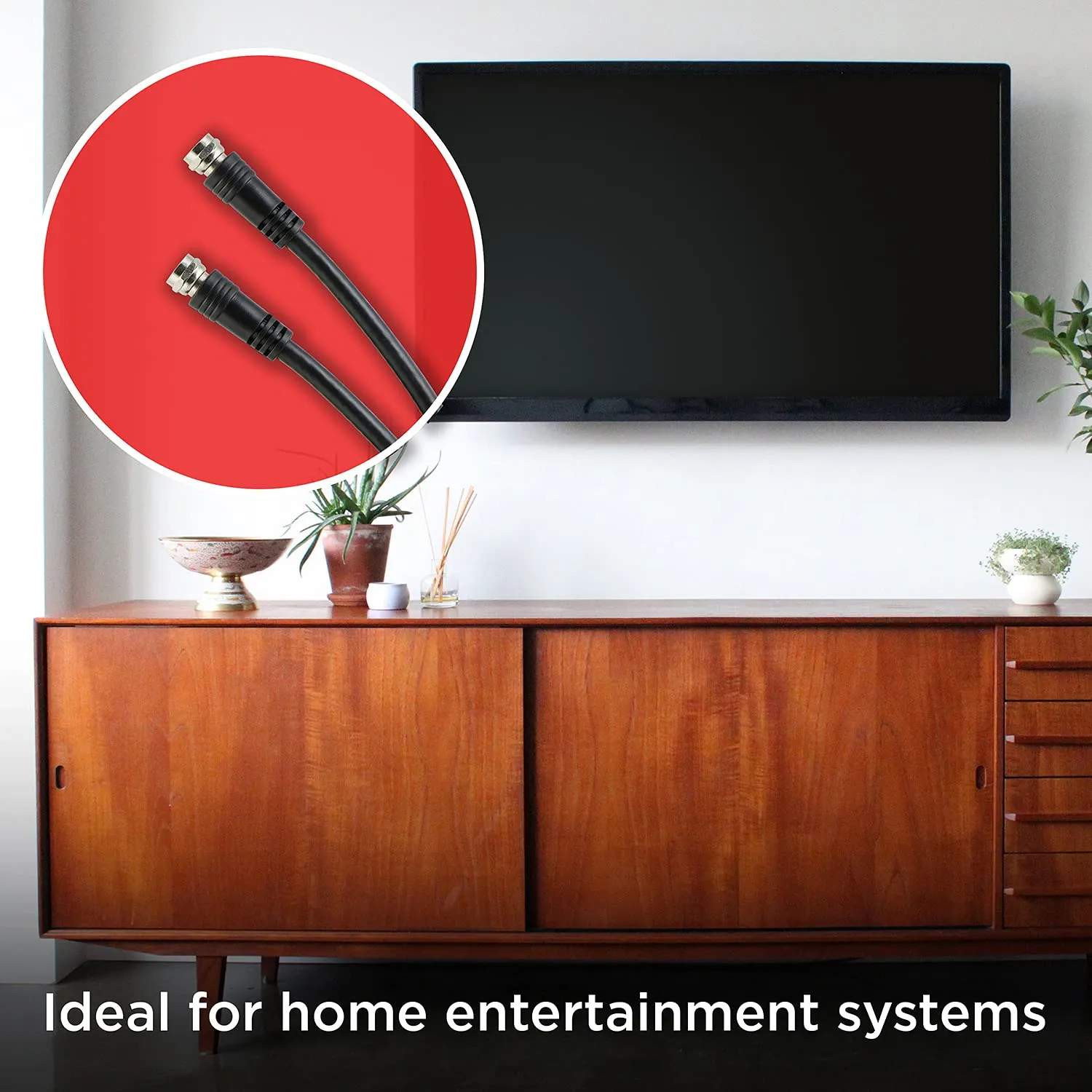
The image highlights RG6 as the practical default for short 75 Ω runs, widely supported by compression fittings and easy to route through walls.
RG6 is the practical default for TV/SAT/CATV drops. Compression fittings are widely available, and it snakes through walls without drama. If you’re wiring multiple rooms or long hallways, you can still start with RG6 and keep an eye on distribution loss.
Step up to: rg11 coaxial cable for long backbones and multi-split feeds.
Best Long-Distance 75 Ω Backbone: rg11 coaxial cable
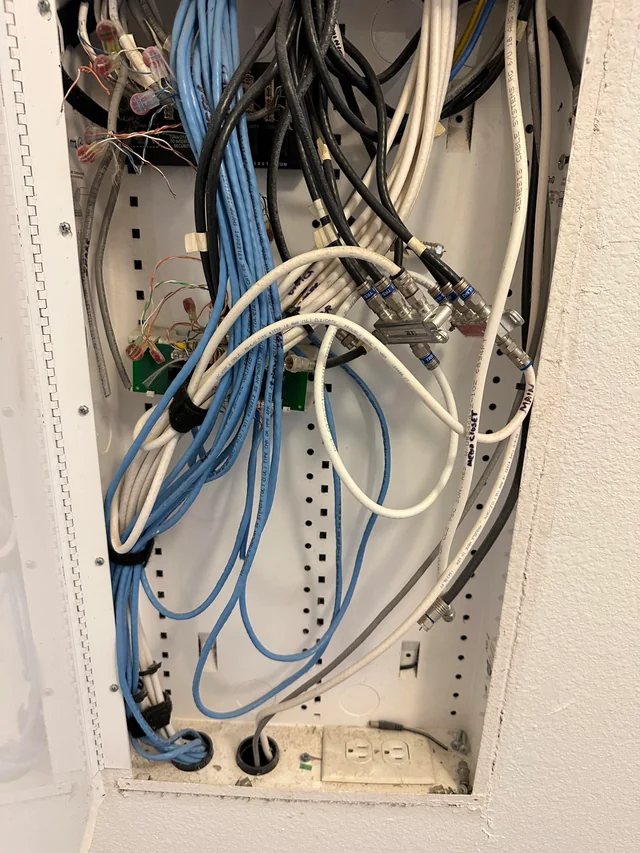
This illustration identifies RG11 as the backbone choice in multi-split or long-building runs, keeping signal quality intact over distance.
RG11 is the 75 Ω low-loss backbone. It’s larger and stiffer than RG6 but keeps signal quality intact across longer building runs.
Use it when: Split counts increase, or when the head-end is far from the end devices.
Best Flexible Jumpers (short runs): rg8x coaxial cable
When rg58 is flexible enough but a tad too lossy for your frequency, RG8X shines. It’s still easy to bend and route yet yields lower attenuation over the same path. Many ham and IoT installers treat RG8X as the ideal “short-run upgrade.”
Use it when: 2.4/5.8 GHz pigtails are short but performance-sensitive.
Best Lab & Bench Patch: RG58
RG58 (often labeled rg-58 coax cable) wins for sheer flexibility and availability. It’s fantastic for test benches, short device jumpers, and temporary setups. Just remember loss grows rapidly with frequency and distance, so keep runs short.
Upgrade to: rg8x coaxial cable or LMR-400 when attenuation matters.
Best High-Temp, Rugged Internal: rg142
RG142 (PTFE dielectric, double-shielded) is the tough internal jumper you use when heat and EMI are non-negotiable. It’s stiffer than RG316 but more durable in harsh enclosures.
Use it when: Enclosures run hot, or where repeated handling and shielding integrity matter.
Best Micro-Coax Pigtails: rg316 (with space-saver options)
RG316 balances size, heat tolerance, and connector availability (SMA/MCX/MMCX). If space is even tighter, rg 174 coaxial cable or rg178 route through tiny gaps—just keep them short. For the smallest losses and most rigidity inside precision gear, consider rg402/rg405 semi-rigid.
Best for Precision & Fixtures: rg402 / rg405 semi-rigid
Semi-rigid coax locks in geometry and impedance. That stability reduces microphonics and measurement drift—perfect for microwave/mmWave test, fixtures, and inside instruments.
Use it when: You can pre-form routes once and want repeatable RF behavior.
Coaxial Cable Comparisons
RG8X vs RG58
- Loss: rg8x coaxial cable typically beats RG58, especially as frequency climbs.
- Flexibility: RG58 is slightly more compliant; RG8X remains installer-friendly.
- Verdict: If performance matters and space allows, go RG8X; for ultra-flex, very short patches, RG58 still rules.
RG6 vs RG11 (75 Ω)
- Loss: RG11 is lower, making it the backbone pick for long runs and multi-split topologies.
- Handling: RG6 routes easier through studs and tight corners.
- Verdict: RG6 for drops, RG11 for trunks.
LMR-400 vs RG8 coaxial cable / RG213 (50 Ω)
- Loss: cable coaxial lmr 400 generally offers a lower-loss path than legacy RG8/RG213 at UHF/SHF.
- Ecosystem: LMR-400 has deep connector support and outdoor accessories.
- Verdict: Pick LMR-400 for modern outdoor runs; keep RG213 where you value legacy robustness or have existing inventory.
RG316 vs RG 174 coaxial cable vs RG178 (micro-coax)
- Thermal & durability: rg316 handles heat/abuse better; rg142 is the heavy-duty step up.
- Space & loss: rg178 is thinnest but most lossy; rg174 sits in the middle; rg316 is the best all-around pigtail when space allows.
- Verdict: Choose by enclosure constraints first, then verify loss at your operating band.
Coax Buyer’s Matrix
Pick the band and length. If you need maximum flexibility, bias left; if you need maximum performance, bias right.
| Band / Distance | ≤10 ft | 10–50 ft | 50–150 ft | 150–300 ft |
|---|---|---|---|---|
| HF/VHF | RG-58 / RG-8X | RG-8X / RG-213 | RG-213 / LMR-400 | LMR-600 |
| UHF (400-900 MHz) | RG-8X | LMR-400 | LMR-400 | LMR-600 |
| 2.4 GHz | rg8x / RG58 (short) | LMR-400 | LMR-400 | LMR-600 |
| 5.8 GHz | RG-8X (very short) | LMR-400 | LMR-400 | LMR-600 |
| 75 Ω TV/SAT | RG-6 | RG-6 | RG-6 / RG-11 | RG-11 coaxial cable |
Coax Either-Or Picks
| Question | Pick This | When | Or This | When |
|---|---|---|---|---|
| RG8X vs RG58 | RG8X | Better loss, still flexible | RG58 | Ultra-flex, very short |
| RG6 vs RG11 coaxial | RG11 | Long trunks, multi-split | RG6 | Standard drops |
| LMR-400 vs RG8 coaxial | LMR-400 | UHF/SHF outdoor, low loss | RG213 | Legacy, rugged handling |
| RG316 vs RG174 coaxial | RG316 | Heat tolerance, durability | RG174 | Very tight spaces |
| RG316 vs RG178 | RG316 | All-around pigtail | RG178 | Ultra-thin, shortest runs |
| RG402 vs RG405 | RG402 | Slightly larger OD, common | RG405 | Smaller OD, tighter bends |
Coax Connectors & Compatibility
- Impedance all the way down. Use 50 Ω connectors (SMA, N, TNC, BNC-50) with 50 Ω cable, and 75 Ω connectors (F-type, BNC-75) with 75 Ω cable. Mixing “works” physically but compromises the match.
- Strain and sealing matter. Right-angle heads reduce side-load; boots, gaskets, and self-amalgamating tape prevent water ingress that destroys performance.
- Adapters: use short pigtails. When you must mate odd ends, specify a short adapter pigtail rather than a rigid barrel. It saves connectors and keeps bend radius honest.
Need the exact ends and orientations? Browse
Install Best Practices
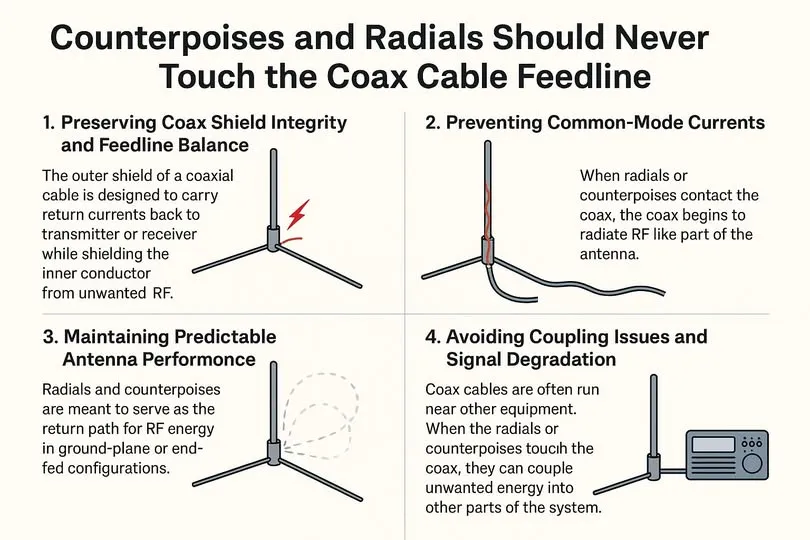
Correct installation is crucial for coaxial cables. This visual highlights best practices such as avoiding sharp bends, securing cables along support structures, and preventing physical stress that can degrade performance.
- Minimum bend radius: Never kink coax. Tight bends create impedance bumps and fatigue conductors. If you must turn sharply, use a right-angle connector or plan a gentle loop.
- Pulling and routing: Use proper pulling eyes; avoid crushing under cable trays, door jambs, or zip ties cinched too tight.
- Weatherproofing: Outdoors, use UV-resistant jackets, boots, and sealing tape. Add drip loops and strain relief at entries.
- Grounding/shielding: Bond shields where appropriate at building entry. Avoid ground loops in sensitive systems.
- Power handling: Bigger OD and air/foam dielectrics tend to carry more power. Make sure connectors match the power rating, not just the cable.
What is 4ga coaxial cable?
You’ll see “4ga coaxial cable” in forums or listings, but coax isn’t defined by AWG gauge names the way power wire is. RF cables are identified by RG/LMR model numbers and impedance. If someone specifies “4 ga,” clarify the actual RG/LMR type they mean and verify attenuation and bend limits for your frequency and run length.
RG58 (50 Ω)
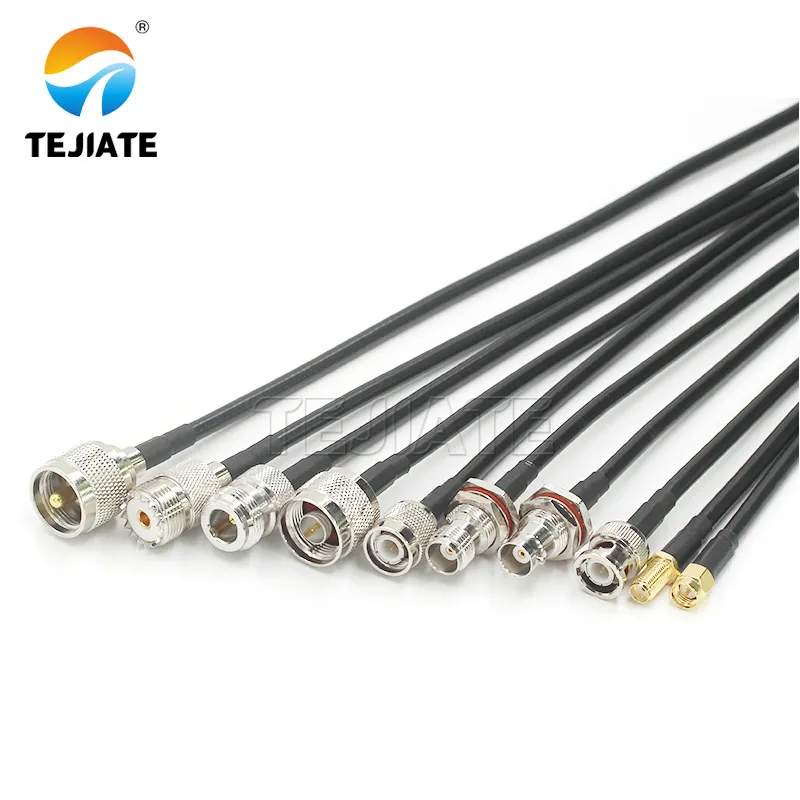
The RG58 cable is widely used due to its flexibility and low cost. While not ideal for high-frequency or long-distance applications, it remains a standard choice for radios, RF test benches, and educational projects.
The everyday lab and jumper cable. It’s available everywhere, bends easily, and terminates quickly. Loss rises with frequency and length, so keep it short for SHF work.
Typical ends: SMA/BNC/N/TNC.
Upgrade: rg8x coaxial cable or cable coaxial lmr 400 if attenuation is hurting your link.
rg8x coaxial cable (50 Ω)
A sweet spot between performance and handling. It’s still compact yet beats RG58 on loss, especially useful for 2.4/5.8 GHz indoor/outdoor pigtails where you want to keep gain margins healthy.
Typical ends: SMA/N/BNC; right-angle options help at the radio.
Upgrade: LMR-400 for longer outdoor stretches.
rg8 coaxial cable / RG213 (50 Ω)
Large and rugged, favored in legacy bases and HF/VHF/UHF installations. It’s a known quantity with good durability.
Consider: Modernizing to LMR-400 brings lower loss without giving up reliability.
Typical ends: N/SO-239 ecosystems in ham bases; SMA/BNC in lab cross-overs.
cable coaxial lmr 400 (50 Ω)
The default low-loss outdoor line for Wi-Fi/LTE/5G base-to-antenna runs. It locks in a great balance among attenuation, OD, and cost with deep connector support.
Notes: Respect bend radius and sealing; use boots and weather tape on rooftops.
Upgrade: lmr 600 for very long spans or tight link budgets.
lmr 600 (50 Ω)
Bigger, stiffer, and lower loss. The go-to for tower work and long rooftop routes.
Plan ahead: Map pull paths, corner clearances, and entry protection before the roll hits the site.
cable coaxial rg6 (75 Ω)
Standard for CATV/SAT drops and short distribution. It’s installer-friendly and widely supported by compression tools.
When to move up: Long trunks, multi-room feeds, or when signal margin feels tight—use rg11 coaxial cable.
rg11 coaxial cable (75 Ω)
Lower loss backbone cable for 75 Ω systems. It’s stiffer than RG6 but keeps signal integrity across distances and splitter trees.
Tip: Plan gentle arcs in conduits and junctions to respect bend radius.
rg316 (50 Ω)
PTFE dielectric, silver-plated conductors, and a tough jacket make rg316 a staple for short pigtails inside devices, panels, and enclosures.
Alternatives: rg 174 coaxial cable/rg178 when space is ultra-tight; rg142 when heat and EMI control are paramount.
rg 174 coaxial cable & rg178 (50 Ω)
These ultra-compact lines route where nothing else fits. They’re perfect for short internal runs but come with higher attenuation.
Rule: Keep them as short as you can at microwave bands.
rg142 (50 Ω)
A more rugged, high-temp PTFE option than RG316. It’s stiffer, shields well, and handles abuse better inside hot enclosures.
Use cases: Near power devices, RF amps, hot-running boards, or EMI-sensitive sections.
rg402 / rg405 (50 Ω semi-rigid)
Copper-sheathed, bend-once coax for test fixtures and high-precision assemblies. The geometry stays put, improving repeatability at microwave/mmWave.
Process: Use bending tools and route drawings; specify connector orientations precisely.
Order Custom RF Cables
When you request a quote from TEJTE, include:
- Cable family: e.g., cable coaxial lmr 400, rg8x coaxial cable, rg316.
- Exact length & frequency: e.g., “95 ft at 2.4 GHz, rooftop to AP.”
- Connector A/B & orientation: e.g., SMA-male (straight) → N-female (bulkhead, panel-mount).
- Environment: UV exposure, temperature range, rooftop or in-enclosure routing.
- Special instructions: Labeling, test data (return loss/VSWR), boots, right-angles, color coding.
Ready to spec it now? Start with
Coax FAQs
Q1. Which coaxial cable should I choose for a 120 ft 2.4 GHz outdoor run?
A. Start with cable coaxial lmr 400; if the link budget is still tight, step to lmr 600 for added headroom. Use weather boots and plan strain relief at the antenna and entry.
Q2. Is rg8x vs rg58 really noticeable on 6 ft jumpers?
A. At microwave bands, yes—rg8x coaxial cable trims attenuation and helps marginal links. On very short patches below 1 GHz, the difference is smaller but still real.
Q3. Can I use RG6 in a 50 Ω radio system?
A. Not advised. RG6 is 75 Ω; it will raise VSWR unless you add matching components. Use rg8x, LMR-400, or lmr 600 depending on length and frequency.
Q4. When do I step up from LMR-400 to lmr 600?
A. When runs exceed ~150 ft at UHF/SHF or your design benefits from every extra dB of margin. Budget for larger OD and wider bend radius.
Q5. Are rg316 and rg 174 coaxial cable interchangeable?
A. No. rg316 handles heat better and is tougher; rg174 is smaller and more flexible but more lossy. Choose based on enclosure space and temperature.
Q6. Why would I use rg402/rg405 semi-rigid?
A. For stable, repeatable geometry in microwave/mmWave test and instruments. They hold bends, reduce microphonics, and keep impedance consistent along the route.
Q7. Is “4ga coaxial cable” a standard spec?
A. No. Coax uses RG/LMR model names and impedance ratings, not AWG “gauge” naming. Ask the supplier to clarify the intended RG/LMR type and confirm specs for your band and distance.
Bonfon Office Building, Longgang District, Shenzhen City, Guangdong Province, China

A China-based OEM/ODM RF communications supplier
Table of Contents
Owning your OEM/ODM/Private Label for Electronic Devices andComponents is now easier than ever.
